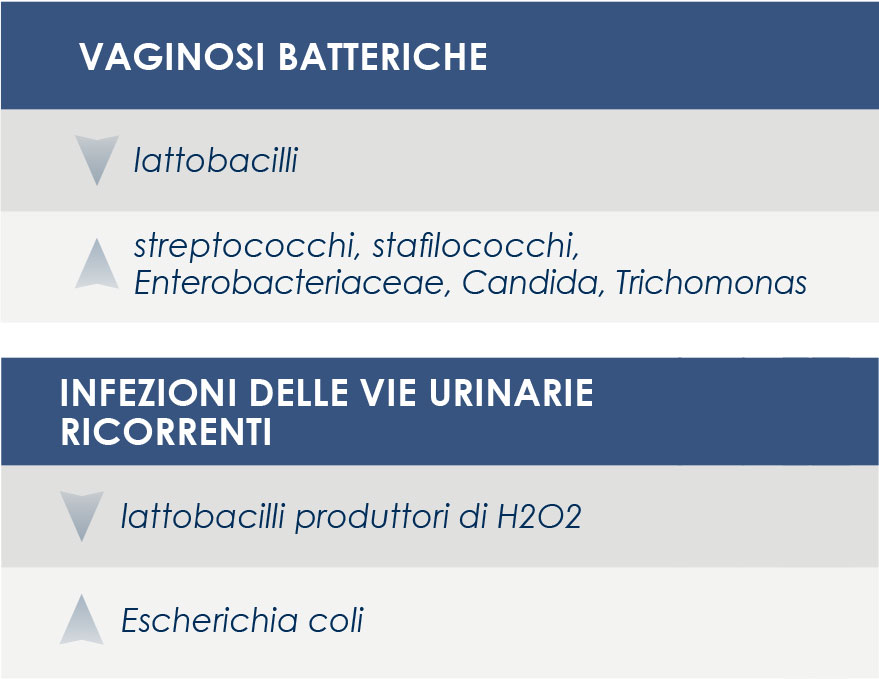Numerous microbes live on the surface and in the human organism, which together form the so-called microbiota. The genito-urinary tracts are also populated by microorganisms; in conditions of equilibrium this coexistence does not constitute a danger, indeed, some microbes are precious allies of health. Lactobacilli, for example, help protect the vaginal environment from colonization by potential pathogens.
Sometimes the microbiota can undergo risky changes. These conditions, known as dysbiosis, are characterized by the reduction of health-friendly microbes and the increase of potential pathogens. Bacterial vaginosis, for example, is associated with the reduction of lactobacilli and the increase in Streptococcus, Staphylococcus or Enterobacteriaceae species, Candida, or Trichomonas. Recurrent urinary tract infections, on the other hand, are associated with a reduction in hydrogen peroxide-producing lactobacilli and with significant increases in various strains of Escherichia coli, often carriers of multiple drug resistance.




